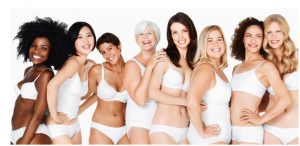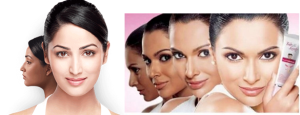Tall, lean and pale models with accentuated cheek bones peer at us from screens and billboards everywhere, setting standards of beauty unattainable sans makeup and photoshop.
The ‘Scarcity Principle’ dictates that less the availability of something the more it is valued. Marketeers have capitalized on this formula to such an extent that they deliberately portray and popularize what does not exist. Further, when the concept of beauty is deployed to fuel cultural sensitivities and social inequalities, it can create insecurities deep enough to mask science and logic, and emotionally drive consumers into aspiring for an unreal standard of what is but subjective perception.
The million-dollar question then is- How do you market products aimed to augment looks without implying to the consumers in any way, that they inherently lack beauty? While we have seen several brands attain this delicate balance to different degrees, one particular case stands out- not because it failed or succeeded, but because it did both and simultaneously!
Unilever with its vast list of subsidiaries has an interesting way of using social ques to promote its marketing objectives. Dove, a Unilever brand recently rose to global acclaim for its ‘Real Beauty’ campaign featuring untouched photos of regular women of all races and all body types. This campaign aimed at reducing the dissonance between the unrealistic media representation of the female figure and women’s actual bodies. It not only allowed women to connect to on screen models for the first time but also refrained from inducing in them, self-doubts regarding their body images.
Surprisingly enough, the same parent company also fosters under its umbrella brands like Axe and Fair and Lovely, with visions diametrically opposing that of Dove. While Axe objectifies women, and reduces them to lust magnets, Fair and Lovely plays on consumer psychology to promote fairness as a factor of success. These cases raise serious eyebrows from the morality and ethics critiques. Katherine Froehlich, among many others has remarked- “Upon examination, the hypocrisy of Unilever is remarkable – one brand advocates need for ‘Real Beauty’ and condemns the world’s current beauty standard, while another frequently presents and encourages unrealistic beauty ideals.”
While this duplicitous move makes sense in the context of brand positioning and targeting widely different consumer segments, it nonetheless cannot justify research outcomes that suggest demeaning natural skin color in a country where most women are on the duskier side leads to lower self-dignity and confidence among women.
Ultimately is marketing all about deluding consumers to achieve financial objectives? Does corporate social responsibility stop at organizing community service events? Can businesses ever create value in the true sense not just for shareholders but all stakeholders? The future of Dove and Fair & Lovely might offer answers. For now, we can wait and hope that the answers will be ethically aligned.
– Indu Upadhyay
PGPMR ’17-18
References-
Dove. “The Dove® Campaign for Real Beauty.” Social Mission Articles & Advice. Web. November 2015. http://www.dove.us/Social-Mission/campaign-for-real-beauty.aspx
Froehlich, Katherine. “Dove: Changing the Face of Beauty?” EJournals.bc.edu. Vol 12, No 2, 2009. Online PDF. November 2015


